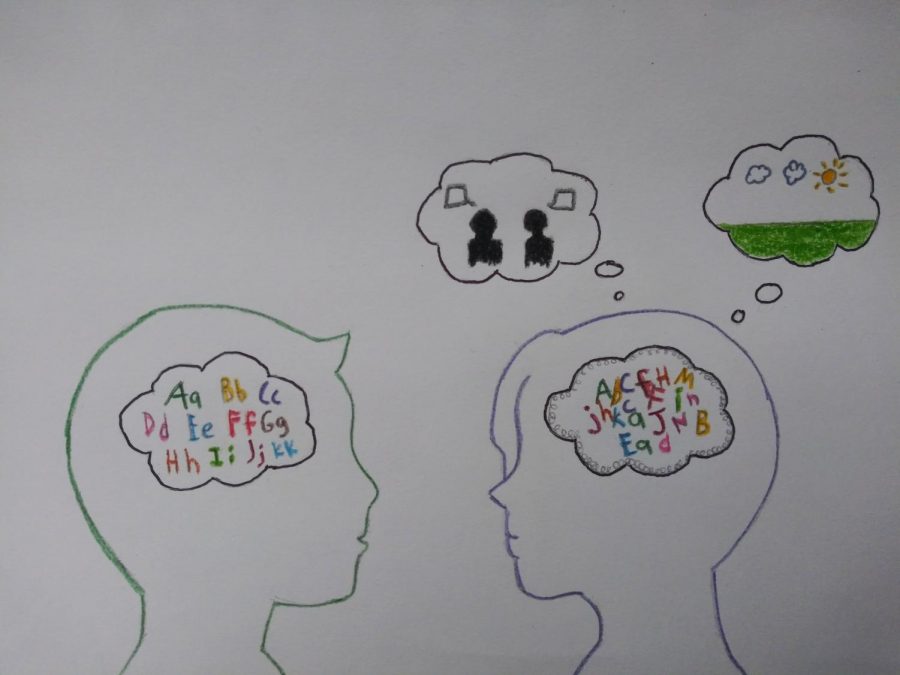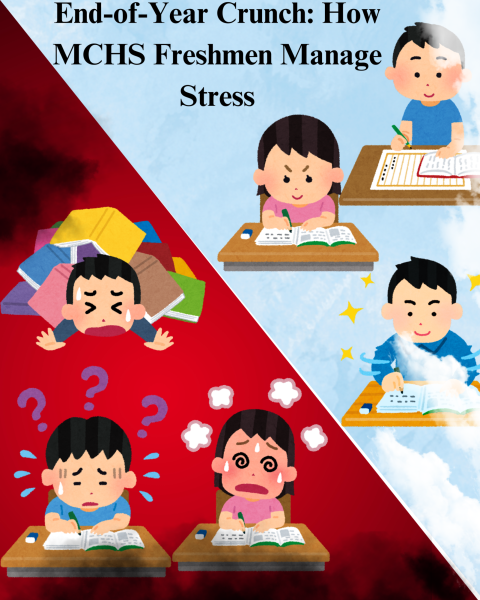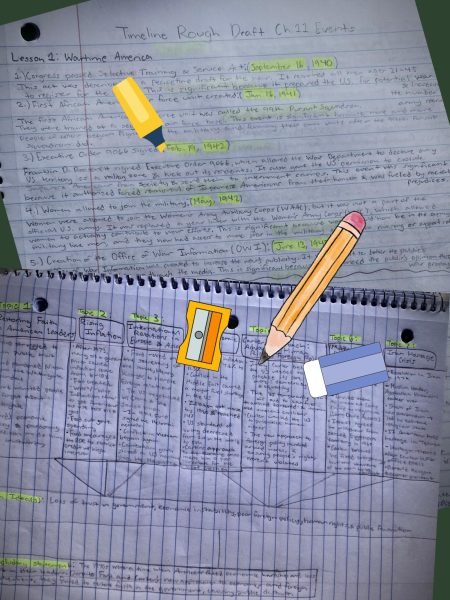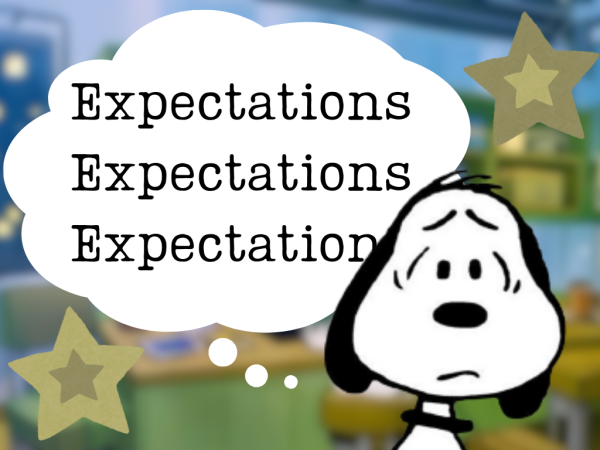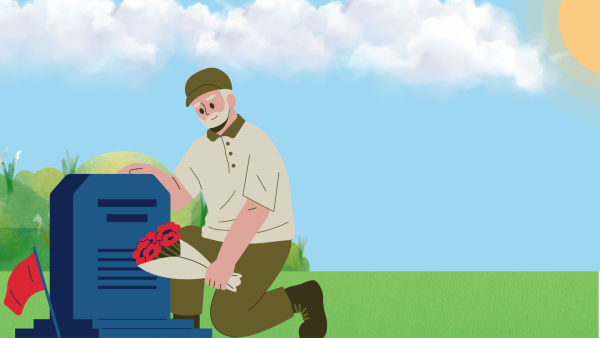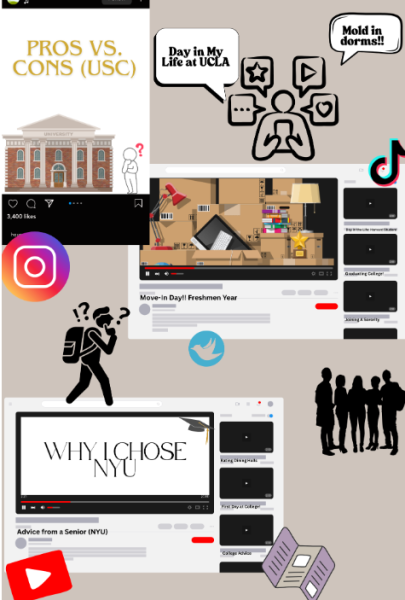How COVID has affected students with learning disabilities
Staying on task and keeping up with lessons are some of the many struggles that students with learning disabilities face
Millions of students today find themselves starting the new spring semester with the same repetitiveness as the last: sitting in front of a screen and listening to a lesson they aren’t even paying attention to. For students with special needs, this is an all too common situation they find themselves in.
With the lack of social connections to teachers and staff, which are crucial elements to their academic success, students find themselves falling behind their peers and struggling to juggle with both the fact they are surviving a pandemic and trying to do well in school.
14-year-old Francisco Serna from Bolsa Grande High School who was diagnosed with autism spectrum disorder tells his thoughts when he started learning online.
“I have a hard time focusing in school, I thought I was doomed for failure. It isn’t as engaging as in-person. I lack the motivation to keep going,” he said.
Serna explained further that online learning doesn’t have any real advantages for him. He sees online learning as a hindrance to his ability to learn and pay attention to classes.
With the seemingly less support from teachers and staff, it leaves special education students feeling as though they are drowning in the never-ending responsibilities of school and home life. Finding that balance is one of the key factors of getting through this difficult time.
For Jann Carney, a special education teacher from Mendez Fundamental, online learning has had its ups and downs for her and her students’ lives.
When asked how online learning has impacted her workload she said, “Well, initially it impacted it immensely because you had so much stuff being hit at you from administration, from the district, and because I teach special ed, you have to keep data logs. And there was just so much information being thrown at us all the time, and that was extremely overwhelming and I have talked to so many teachers across the country that feel that same way.”
As for her students, Carney mentions how she believes that in-person instruction has been an environment her students thrived in more than online.
“They are able to get more one-on-one help in a classroom environment. But, it’s personalized. I have some kids, no matter what, virtual or in-person, they’re going to thrive because that is just their nature as a student. They’re the kind of person that is responsible, they’re dedicated to their education, they get things done and they’re willing to participate. And you have some who, I think if we were even in-person, they wouldn’t do their homework, they wouldn’t ask questions for help, they wouldn’t turn everything in. It’s the different personalities you are working with, virtual or in-person,” said Carney.
Carney continues to include the strategies she has been using to help her students learn the course material.
“Because I am a special ed teacher it’s very important that they see everything that they are working on. They can’t just have me talking to them all the time. In special education students, there is what is called auditory processing, their ability to understand what is being said to them gets lost in translation in their heads so they have to also see it. And it’s super important that I do small talks at a time of information. You can’t just keep loading them up with a lot of stuff, they’re not going to operate that way,” said Carney.
Carney understands that it’s a difficult time for her students and it can be hard staying attentive to her lessons and resist the distractions at home. She has methods as to how to keep them engaged but even then, she finds the biggest challenge to be when her students don’t believe in themselves. She counters this with positive reinforcement and hopes to see the day when they finally reach their goals.
Lindsey Bojorquez, a special education teacher at Century High School, said, “My classroom is tricky because sometimes special education students have behaviors that you don’t see in a typical general ed class. A lot of the time they feed off of each other so a big portion of my day is redirecting their focus and monitoring their Chromebooks. Now, from home, I can’t see what they are doing except by using GoGuardian. It’s been really helpful, it feels like I have the ability to almost walk around the classroom without really walking around. I can see what they are doing on their Chromebooks.”
Even with all the at-home distractions, Bojorquez finds her students doing more of their assignments than they would have done in-person. She explains why she believes this result to have manifested.
“That’s the thing that I found most fascinating and realized from all of this is that I am getting more work because I think those distractions and off-task behaviors or even the perception that it’s not cool to do your work, is eliminated,” said Bojorquez.
According to her, online learning hasn’t really affected her work or her curriculum which is a beneficial factor for her students.
She said, “With special education students, even when we go through the information and answers together, a lot of them still get it wrong and there is a very easy way with my curriculum to let them see their mistakes and fix their mistakes and rework it for better credit.”
She also states how remote learning can be difficult when she feels as though her students aren’t paying attention to her or when they have connectivity issues. She understands her students are facing day-to-day life struggles but she finds herself missing those personal interactions with her students.
When asked as to what were some difficulties her students have encountered she said, “Connection issues. Every day I have someone who comes in late or leaves early and emails me ‘Oh I don’t know what happened, my wifi went down.’ So connection issues are a big source of hardships for my students or it becomes a crutch and they know to say that. I have a lot of students with an unstable connection and even sometimes I do too.”
Bojorquez states that one of her most common challenges is when her students have a strong desire to do well and yet they don’t understand why it’s so hard for them to achieve their goals.
She said, “And truthfully behavior is a challenge. A lot of times, special education students will misbehave to deflect from them not understanding. So I deal with a lot of classroom behaviors where I know ‘Ok, he is not a bad kid and he’s trying to get his friend’s attention because he doesn’t understand and he doesn’t want to look stupid.’ I’ve had students just get up and leave, throw their books and it’s like understanding the why behind the behavior is challenging.”
Teaching special education students is no easy task especially when handling such challenges. But even with these hardships, the aftermath of overcoming them is very rewarding not only for the students but also for the teacher.
Bojorquez emphasizes the importance of being compassionate and kind to others, especially when encountering those who are different from you.
“My big thing is just having compassion. We don’t know everyone’s struggle is or what is hard for them or what their challenges are but if we just treat everyone with kindness it’s really important, especially when learning about special education.”
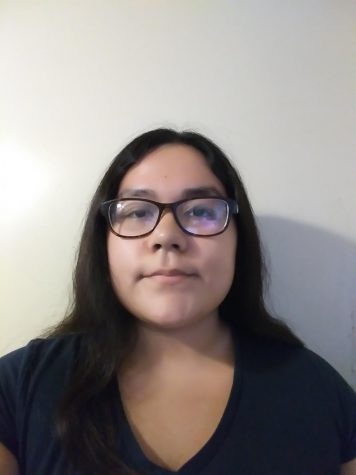
In 7th grade I was the leading role in my school's play, one of my favorite childhood video games is Left 4 Dead, and I enjoy watching anime.

































